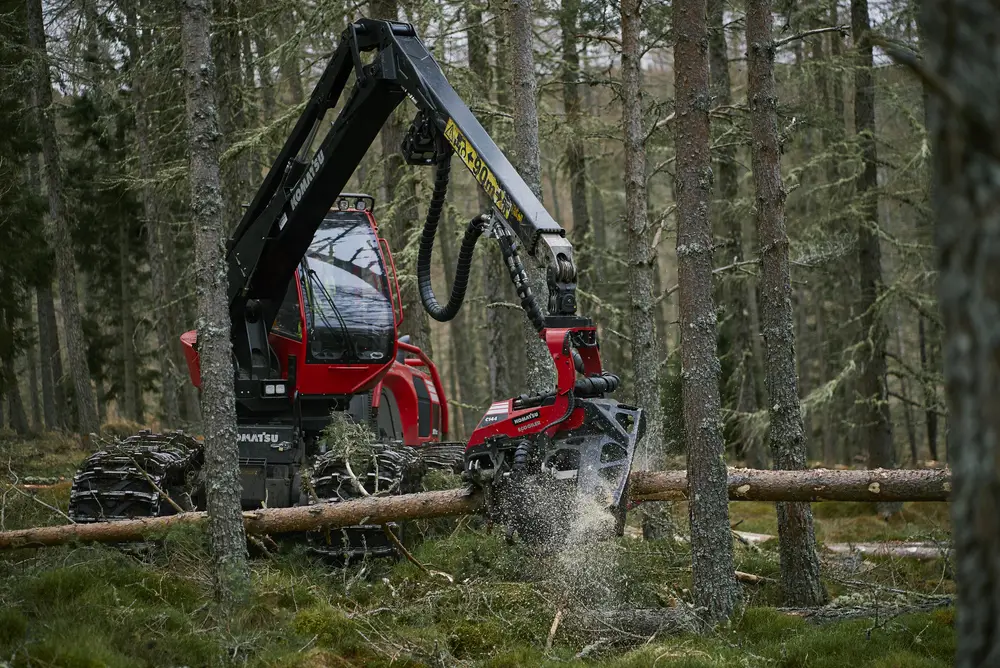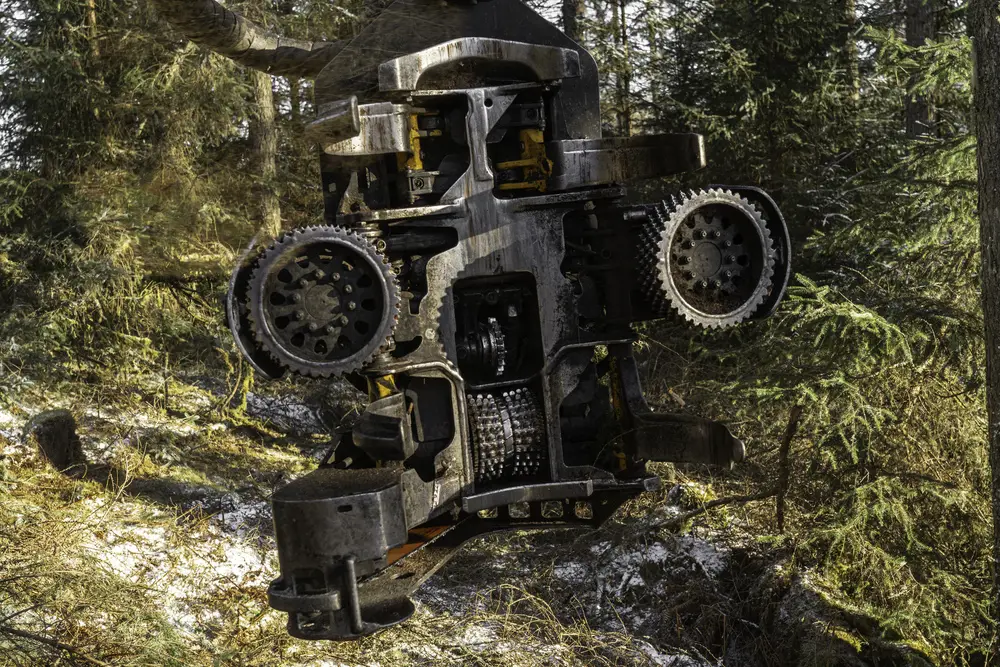The technology supporting our harvesting fleet

Harvesting timber is a key part of what we do, so we thought we'd share some of the clever technology used by our teams.
One of the ways we fell timber is with harvesting machines that use sensors to measure the diameter of the tree. The machine grips the trunk of the tree using a grapple harvesting head, then cuts it at the stump with its internal chainsaw, before lifting it free from the ground and removing the branches with static knives as the tree passes through the head. Our highly trained operators use the information, measured by the harvester, to determine how the product is cut. The tree is then arranged for collection by a forwarder machine which will move and stack the cut timber ready for collection by lorry.
We use different parts of the tree for different products, so nothing is wasted.
This video is taken from inside one of the harvesting machines that our trained staff use to cut productive timber.
As well as the mechanical process of felling and processing the tree, the harvesting machine gathers and displays data that is used to help the operator and harvesting forester work safely and efficiently. This data can be seen both in the cab of the machine and remotely in our regional offices, giving our teams an oversight of how the felling is going.
This includes:
- how hard the machine is working – displayed in RPM
- how much fuel is used and remaining
- a live production total – showing exactly what has been cut and how much
- hourly data of how many trees per hour, the volume of timber per hour, and how much fuel is used per hour
- the average tree size on the site (per species)
- shift start and end times, including breaks

A close up of the head of the harvesting machine.
Maps and spatial information can also be sent directly to the harvester and displayed on screen in the cab. This means the operator can see exactly where they are on the site and set proximity alarms to make sure the machine stays within a set zone. This provides our operators with useful additional alerts to the physical marking of features in the forest.
The data that is collected makes it easier to predict how long sites will take to harvest based on historical production for similar tree sizes. This makes it easier for coordinating and planning when machinery can be moved to a new site. Information that helps with maintenance, such as production hours and fuel consumption, is also sent to Mechanical Engineering Services who look after the machines.
Once felling is complete, the area is replanted and the growing cycle begins again. This sustainable process provides raw materials for things like wood fuel, paper and packaging, and construction materials.
All our forests are independently certified as being responsibly managed under FSC certification. This ensures we're producing sustainable timber while looking after Scotland’s forests.
- Rare species helping to restore native woodland
- The 'Last Ent of Affric' is no longer alone
- How we can help solitary bees